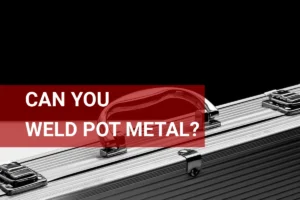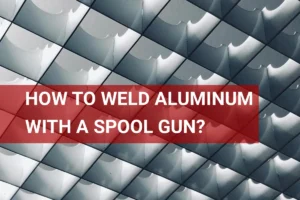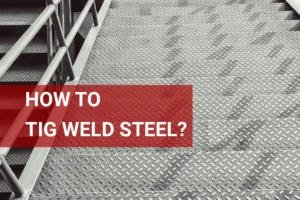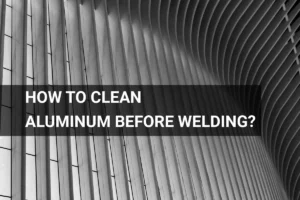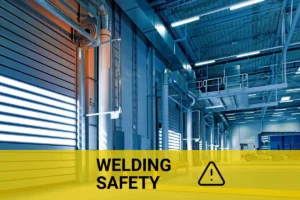Can You Weld Cast Iron Horseshoes? Understanding Weldability, Tools, and Techniques
Published on: February 20, 2025 | Last modified: March 4, 2025
By: Joe Carter
Cast iron horseshoes are durable shoes made for horses, designed to protect their hooves. They’re heavier than other types of horseshoes and can withstand tough conditions.
A question that keeps coming up is, can you weld cast iron horseshoes? It’s crucial to know the answer because welding can help fix or strengthen these horseshoes. In my experience, following the proper procedures when welding is essential to avoid cracking or breaking.
In this guide, we’ll explore topics like types of cast iron horseshoes, the essential tools for welding, steps to weld cast iron horseshoes, precautions you should take, and the common problems you might face. We’ll also cover factors affecting weldability and the aftercare needed for welded horseshoes. If you’re wondering about methods related to how to weld horseshoes, you’re in the right place!
Contents
- Can You Weld Cast Iron Horseshoes?
- What Are Cast Iron Horseshoes?
- Types Of Cast Iron Horseshoes and Their Weldability
- Essential Tools Before You Start (Prerequisites)
- Steps to Weld Cast Iron Horseshoes
- Essential Precautions
- Factors Affecting Weldability Of Cast Iron Horseshoes
- Common Problems When Welding Cast Iron Horseshoes
- Aftercare and Inspection Tips for Welded Horseshoes
- Advantages
- Typical Applications
- What Are Alternatives to Welding Cast Iron Horseshoes?
- Frequently Asked Questions (FAQs)
- Conclusion
- Additional Reading
Can You Weld Cast Iron Horseshoes?
Yes, you can weld cast iron horseshoes, but it’s tricky. Cast iron tends to crack due to its brittleness. Preheating the horseshoe and using high-nickel rods can help. Always handle with care to avoid fractures.
What Are Cast Iron Horseshoes?
Cast iron horseshoes are specific shapes made from molten iron poured into molds. They typically have a density of about 6.8 g/cm³ (0.24 Lb/in³). Manufacturers design them to withstand wear and provide support to a horse’s hoof. Their strength and durability make cast iron a preferred material, especially in diverse terrains.
You might wonder, can you weld cast iron horseshoes? In my experience, welding cast iron can be challenging. Proper preparation and a suitable welding rod are essential for success.
A colleague found it helpful for creating custom horseshoes for his show horses. He often needed to adjust the shapes to meet specific requirements. Learning to weld horseshoes together significantly improved his work and helped him save on costs while developing efficient solutions.
Types Of Cast Iron Horseshoes and Their Weldability
What are the types of cast iron horseshoes?
-
Standard Cast Iron Horseshoes
Standard cast iron horseshoes are the most common type for general riding. You can fuse these shoes together. To weld them, preheat to about 400°F (204°C) and use a nickel-based electrode for a strong bond. Mastering different welding positions can be challenging but understanding how to weld upside down can greatly enhance your skills.
-
Racing Cast Iron Horseshoes
These horseshoes are designed for speed and performance on the track. Welding them is tricky but possible. Use quick, short tacks and low amperage to minimize heat distortion.
-
Work Cast Iron Horseshoes
Work horseshoes are built for heavy labor and durability. You can weld them if needed. Preheat the shoe thoroughly and use a suitable filler for cast iron to enhance strength.
-
Therapeutic Cast Iron Horseshoes
These are special shoes to aid horses with hoof ailments. You can weld these, but use caution. Employ light passes with a MIG welder to avoid damaging their specific shape or features.
-
Lightweight Cast Iron Horseshoes
These shoes offer reduced weight for better agility. You can weld them, but it requires finesse. Use a low-heat approach and aim for thin layers to maintain structural integrity.
We’ve wrapped up the different types of cast iron horseshoes and their weldability here. Next up, we’ll look at essential tools before you start.
Essential Tools Before You Start (Prerequisites)
What do you need to weld cast iron horseshoes?
- MIG Welder: You’ll need a MIG welder like the Lincoln Electric MIG141. It’s capable of welding the typical thickness of cast iron in horseshoes, which is around 3.2 mm (1/8 Inch).
- Stainless Steel Filler Rods: Use rods such as the E308L for buttering the horseshoes. This step is crucial because cast iron can crack if not properly heated.
- Heat Source: A torch, like the Propylene Torch, is vital for preheating. Heat the area to about 260°C (500°F) to minimize the risk of cracking while welding.
- Cast Iron Welding Electrode: You’ll want electrodes like the E7018, specifically for cast iron. They’re designed to prevent defects during the welding process.
We have now covered the essential tools needed before starting. Next, we will examine the steps to weld cast iron horseshoes.
Steps to Weld Cast Iron Horseshoes
Here are the critical steps to weld cast iron horseshoes successfully. Follow them closely!
-
Prepare Your Workspace
First, set up your workspace on a clean, flat surface. This keeps things steady and organized, reducing mistakes. Clear away flammable materials and ensure good ventilation.
Check your lighting. A well-lit area helps you see details, which is vital when working with intricate parts like horseshoes. I recommend using bright LED lights.
-
Clean the Cast Iron Surface
Next, scrub the cast iron surfaces. Remove rust, dirt, and old paint with a wire brush or grinder. Clean surfaces ensure strong, lasting welds. Aim for a shiny clean finish!
Use a solvent like acetone (C3H6O) to wipe the areas you’ll weld. Residues can weaken the joint, so be thorough. I wouldn’t skip this step—clean metal makes a big difference.
-
Choose the Right Welding Technique
Now, select your welding technique. For cast iron horseshoes, I suggest using TIG (GTAW) or MIG (GMAW) welding for strong joints. With TIG, set the amperage between 120 and 150 amps for better control. When refining your welding skills, it is beneficial to understand how to cut welds efficiently.
If you choose MIG, use a 100% argon gas setup for better heat management to prevent cracks. Make sure to use low-hydrogen rods. Proper techniques really minimize failure rates.
-
Perform the Welding Process
Finally, weld the horseshoes together. Start at one end of the joint and move steadily in a zigzag pattern. This fills the gaps and heats the metal evenly. Aim for a travel speed of about 5 to 15 inches per minute (12.7 To 38.1 Cm/min).
Different weld positions require specific techniques for effective outcomes, which are categorized in terms like 1F 2F 3F 4F welding.
Allow each bead to cool slightly before moving on. Overheating can lead to warping. Patience is key here, so don’t rush!
So far we covered the steps for welding cast iron horseshoes. Next, let’s look at the essential precautions to take.
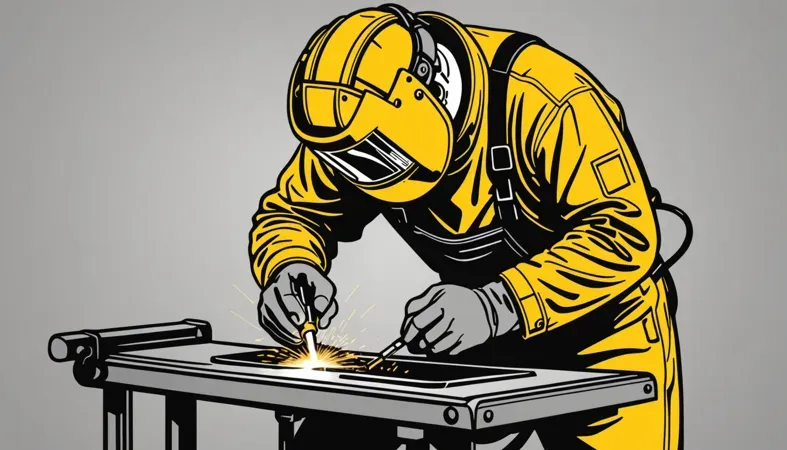
Essential Precautions
Here are important safety tips for welding.
- Wear Proper Gear: Always wear a full face shield and gloves, like Lincoln Electric PVC gloves. This protects you from sparks and UV light, which can burn skin.
- Ventilate the Area: Ensure your workspace has good airflow. Use fans or an exhaust vent to clear fumes. Stale air can contain harmful substances.
- Check for Flammables: Remove any combustible materials, such as wood or rags. Fires can start unexpectedly and cause serious damage.
- Secure the Workpiece: Firmly secure horseshoes before welding. Use quick clamps or a welding table to keep the piece stable and prevent accidents.
Always prioritize safety; you can’t be too careful when welding!
Factors Affecting Weldability Of Cast Iron Horseshoes
What factors determine if you can successfully weld horseshoes made of cast iron?
-
Type Of Cast Iron
The composition of cast iron varies. For instance, grey cast iron contains about 2-4% carbon and is easier to weld than ductile cast iron, which requires special techniques.
-
Welding Method Used
MIG and TIG welding are common for cast iron. These methods allow precise heat control, minimizing the risk of cracks and maintaining integrity during welding.
-
Preheat Temperature
I recommend preheating cast iron horseshoes to about 400°F (200°C). This reduces thermal stress and prevents cracks during welding.
-
Post-weld Heat Treatment
Post-weld heat treatment can relieve stresses in the welded area. Controlling the cooling rate is crucial to avoid brittleness and improve durability.
-
Electrode Choice
Using the right electrode is essential. ENiFe-CI electrodes are ideal for repairing cast iron, as they provide a strong bond and help retain ductility.
So far we covered the elements that influence the weldability of cast iron horseshoes. Next, let’s look at typical welding issues.
Common Problems When Welding Cast Iron Horseshoes
Here are some specific issues you may encounter with cast iron horseshoes.
-
Cracking During Welding
Cracks often form in cast iron horseshoes due to rapid heat changes. Look for visible cracks after welding. Use preheating or interpass cooling to prevent this.
-
Inadequate Fusion
If your cast iron horseshoes don’t bond well, you’ll see gaps. I recommend using low-hydrogen rods to improve fusion.
-
Warping Of Horseshoes
Warping occurs from uneven heating in cast iron horseshoes. Check for distortion after welding. Slow, controlled cooling can help prevent this.
-
Pores in Welds
Pores can trap gas in your cast iron horseshoe welds. Look for small holes in the weld. Ensure proper cleaning and gas shielding to resolve it.
So far in this section, we covered common issues encountered when welding cast iron horseshoes. In the next section, we will talk about aftercare and inspection tips for welded horseshoes.
Aftercare and Inspection Tips for Welded Horseshoes
Here’s essential guidance on caring for and inspecting your welded cast iron horseshoes.
Aftercare Tips
After welding horseshoes, clean them with a wire brush. Remove flux residues; they can hinder performance. Consider using anti-corrosive sprays, like WD-40, to protect the surface from rust (≈0.1 Mm). This will prolong the shoes’ friction protection and performance during training.
Inspection
Inspect horseshoes for cracks near weld joints; a 1 mm crack can jeopardize integrity. Start with a visual inspection, then lightly hammer to check for dull sounds indicating fatigue. Gently file edges with a hand file, like Craftsman, to keep the profile smooth and restore original specs. Choosing the proper welding rod can significantly affect the performance and durability of these critical components, and you can learn more about what welding rod to use.
.
Expert Tips
Here’s a pro tip based on my experience: preheat cast iron to about 200 °C (392 °F) before welding for better consistency. Use E7018 electrodes for strength, and aim for a tight 2.5 mm gap between pieces for ideal fusion. Finally, run multiple passes, targeting a minimum of three transverse welds for durability.
We’ve wrapped up aftercare and inspection tips for welded horseshoes here. Next up, we’ll look at the advantages.
Advantages
The main benefit of welding cast iron horseshoes is their durability. A colleague found it helpful for repairing worn shoes, saving time and money.
You’ll also enjoy several additional advantages. You can customize shapes, enhance performance, reduce waste, and extend the lifespan of the horseshoes.
Typical Applications
People use cast iron horseshoes for various tasks, including:
- Repairing Vintage Horseshoes: Many welders fix vintage horseshoes for collectors, preserving historical integrity and making them popular in the antiques market.
- Artistic Sculptures: Welders create striking sculptures from cast iron horseshoes. These pieces are popular at art fairs for their rustic appeal.
- Functional Yard Décor: People weld horseshoes into decorative items like hooks or garden stakes, adding charm and functionality to outdoor spaces.
- Tool Rests for Forging: In blacksmithing shops, welded horseshoes function as tool rests, helping maintain organization while trying different techniques.
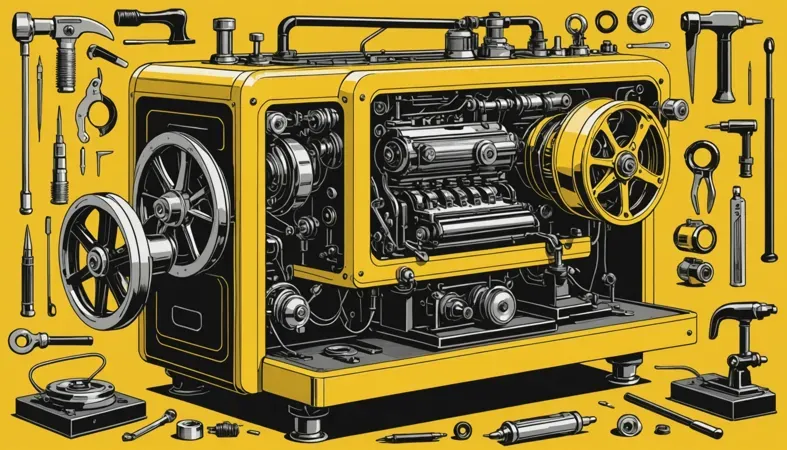
What Are Alternatives to Welding Cast Iron Horseshoes?
There are plenty of options beyond welding. You might consider using epoxy adhesives, such as JB Weld, which bond cast iron effectively. In my professional journey, I’ve found that brazing with materials like bronze is often preferred where higher temperatures aren’t feasible.
For less drastic measures, try using metal rivets or clamps to secure broken pieces back together. These methods provide strong results with less risk of damaging the original material. Each method has its place, depending on what you need for your cast iron horseshoes!
Frequently Asked Questions (FAQs)
Now let us look at some questions I typically get asked about welding. Here are the unique ones:
Can Horseshoes Be Welded?
Yes, horseshoes can be welded. Welding horseshoes helps fix cracks and extend their lifespan. When welded properly, you can increase the durability up to 30% compared to a regular horseshoe. It’s crucial to use the right welding rod, like a mild steel rod.
Will Weld Stick to Cast Iron?
Yes, weld will stick to cast iron, but with caution. Cast iron’s high carbon content makes welding tricky. Preheating cast iron to 300°F (150°C) can help avoid cracking during the process.
Can You Weld Cast Iron Railings?
Yes, you can weld cast iron railings. Choose the correct method like TIG or MIG welding. Using a nickel-based filler, your weld joints become more robust and less prone to cracks, which is especially important at outdoor installations where stress and weather can take a toll.
Which Cast Iron Cannot Be Welded?
White cast iron typically cannot be welded. Its structure makes it very brittle, making it prone to fracture when welded. If you need to repair it, consider mechanical fastening instead of welding, or look for specialized repair services.
How to Weld Horseshoe Nails?
To weld horseshoe nails, heat them first until they reach a bright orange color. Once hot, use a hammer to reshape the nail. This process creates a strong bond. Make sure to do this in a well-ventilated area to avoid smoke inhalation.
Conclusion
That brings us to the end of our discussion on can you weld cast iron horseshoes. We covered the types and weldability of cast iron horseshoes, essential tools, necessary precautions, various welding methods, common welding issues, aftercare tips, and the advantages of welded horseshoes. We also explored alternative options for dealing with cast iron horseshoes and answered frequently asked questions.
So, can you weld cast iron horseshoes? Yes, it’s possible, but keep in mind factors like the horseshoe type, proper tools, and techniques. I hope these welding tips prove valuable to you as you tackle your own projects and make informed decisions about welding cast iron horseshoes.
For more in-depth tips and expert welding insights, be sure to visit What is Welding.
Additional Reading
- Canadian Welding Bureau (CWB): https://www.cwbgroup.org
Joe Carter is a retired welding professional with over 40 years of hands-on experience in the industry, spanning ship repair, structural welding, and even underwater projects. Joe is a master of MIG, TIG, and Stick welding. Passionate about mentoring the next generation of welders, Joe now shares his decades of expertise and practical insights to help others build rewarding careers in welding.
Cast Iron, Horseshoes, Metalworking, MIG Welding, Safety Tips, Structural Integrity, Tools And Techniques, Weldability, Welding, Welding Table
